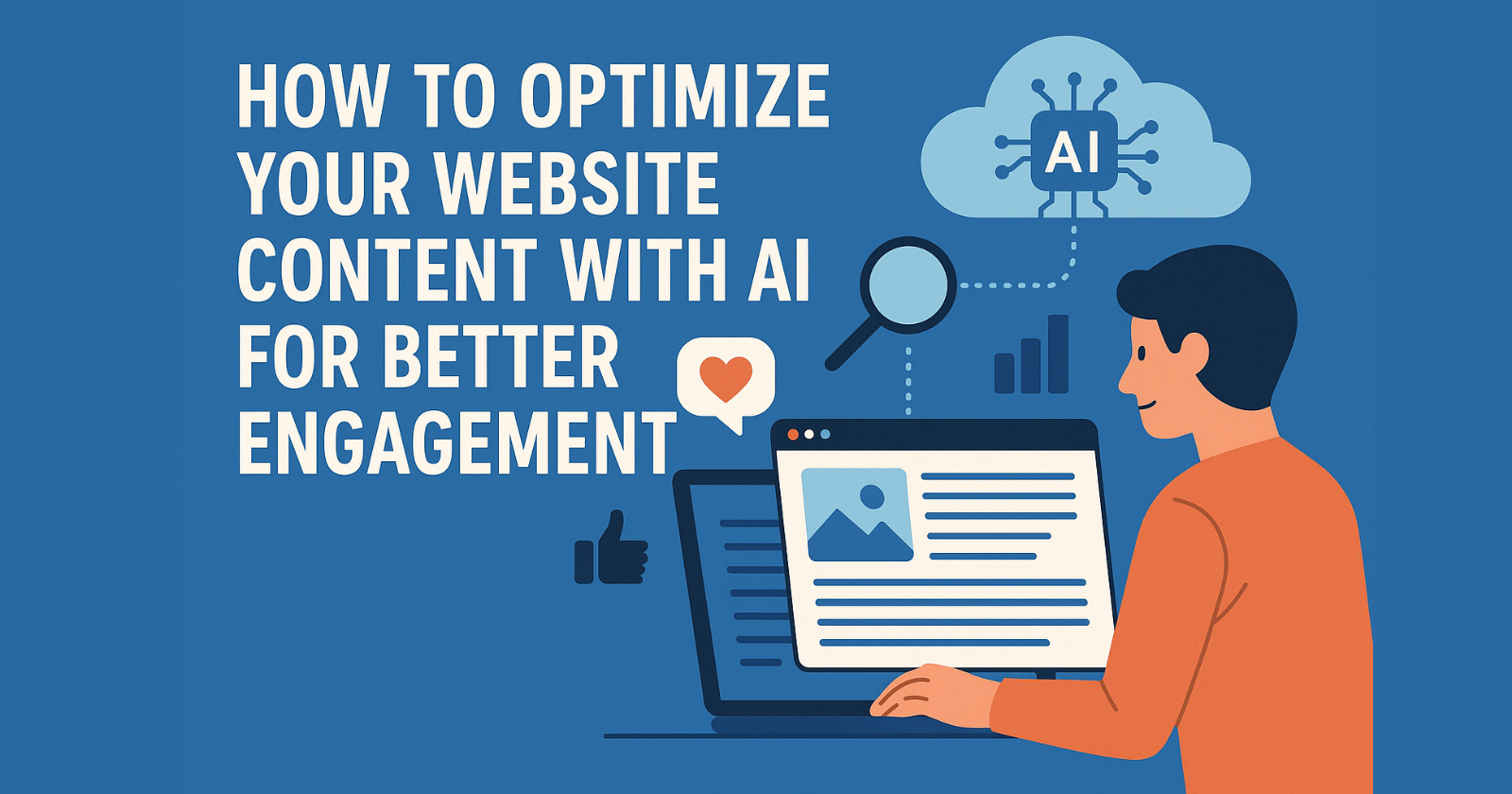Creating content that truly resonates online is harder than it looks. It’s not just about writing well, it’s about writing smart.
Every website competes for attention in an increasingly noisy space. With shrinking attention spans and rising expectations, even solid content can fall flat if not tailored for engagement.
This is where Artificial Intelligence can make a real difference, not by replacing human creativity, but by guiding, supporting, and enhancing it. Imagine having a research assistant, editor, analyst, and creative partner all rolled into one. That is the role AI can play in your content strategy, if you know how to use it well.
Let us discuss some practical ways to optimize your website content with AI. These aren’t just tech hacks; they are creative enhancements designed to help your content connect more deeply with your audience.
1. Understand What Your Audience Wants
Before you start typing, knowing who you are writing for is crucial. AI-powered tools like Google Trends, AnswerThePublic, and ChatGPT can help you identify what your audience is actively searching for and what’s falling flat.
This is a key step in AI website optimization, where intelligent insights are used to shape your content based on real user intent.
They answer questions like:
- What terms are trending in your industry?
- What common problems are people trying to solve?
- What tone and language do readers respond to?
Instead of writing what you think they want, you start delivering what they need, making your website content more relevant, engaging, and conversion-ready right from the start.
2. Use AI to Find the Right Keywords
We have all heard of website keywords. But today, keyword strategy is less about repetition and relevance and context. AI tools can help you choose terms that increase visibility without compromising the natural flow of your writing.
Use AI to:
- Discover low-competition, high-interest keywords
- Identify related phrases and questions (long-tail keywords)
- Find content gaps that your competitors haven’t covered yet
But remember, keywords should feel like a natural part of the conversation. Cramming them in just for search engines does more harm than good. Think of keywords like herbs in a recipe; you want to enhance the flavor, not overwhelm it.
3. Improve Readability with AI Suggestions
Great content is easy to read, even if the topic is complex. AI writing assistants like Grammarly, ProWritingAid and Hemingway Editor help refine your tone, clarity, and sentence structure.
They flag issues like:
- Sentences that are too long
- Passive voice overuse
- Wordy or confusing phrasing
Don’t be afraid to simplify. Writing with clarity doesn’t mean “dumbing down.” It means being respectful of your reader’s time and attention. After all, the best writing is the kind you don’t have to work to understand.
4. Generate Fresh Ideas
Writer’s block is real and frustrating. But AI can kickstart your creativity by offering fresh angles or unexplored topics in your niche. Think of it like brainstorming with a very fast, very enthusiastic intern.
Here is how AI can help:
- Generate blog post ideas based on trending topics for related website
- Suggest subheadings or outlines for long-form content
- Spark ideas for seasonal or timely pieces
Let’s say you run a travel blog website. You could ask ChatGPT to suggest “unique blog post ideas about offbeat destinations in Europe,” and you’ll have 10 ideas in seconds. From there, your experience and voice take the lead.
5. Personalize Content Based on Visitor Behavior
One-size-fits-all content does not cut it anymore. AI makes it possible to tailor experiences based on user behavior, preferences, or location.
This can dramatically increase engagement, especially if you have a diverse audience. Through AI website analysis, you can track how users interact with your site and use those insights to create personalized content that meets them where they are.
For example:
- New visitors can see a welcome message or beginner guides
- Returning users can be shown advanced resources or related content
- E-commerce visitors can see product suggestions based on their browsing history
This kind of subtle personalization helps people feel seen, not sold to. That emotional connection drives trust, clicks and conversions.
6. Enhance Visual Content with AI
Words matter, but visuals grab attention. AI tools make creating compelling visual content easier than ever without design expertise.
Here are a few ways to use AI for visual optimization:
- Use Canva’s Magic Design to auto-generate banners and headers
- Create infographics with AI chart tools or templates
- Remove or edit photo backgrounds in seconds with Remove.bg
- Auto-generate short video clips from blog summaries using Lumen5 or Pictory
And remember, every visual should serve a purpose.
7. Analyze What’s Working and Double Down
Once your content is live, the work is not done. AI analytics tools help you understand how your website content performs so that you can optimize and improve over time.
Look for patterns in:
- Time spent on page
- Scroll depth and bounce rate
- Click-through rate (CTR) on CTAs
Platforms like Google Analytics 4, Hotjar, and Crazy Egg offer insights that help you fine-tune content, test variations, and focus on what truly moves the needle.
Conclusion: The Human Touch Meets Smart Tech
AI is a powerful tool, but it is still a tool. The heart of great content is always human: your ideas, experiences, and voice. What AI does is help you bring that human touch to the right people, at the right time, in the right format.
It shortens the gap between “good enough” and “great.” It saves time on research, boosts your SEO game, sparks creativity, and keeps you aligned with what your audience wants. Used wisely, AI doesn’t make content less human; it makes it more relevant.
So, start small. Use AI for ideation or editing. Test a new visual tool. Analyze a few website pages. See what happens. You’ll likely find that your content reaches more people and speaks to them more clearly.




